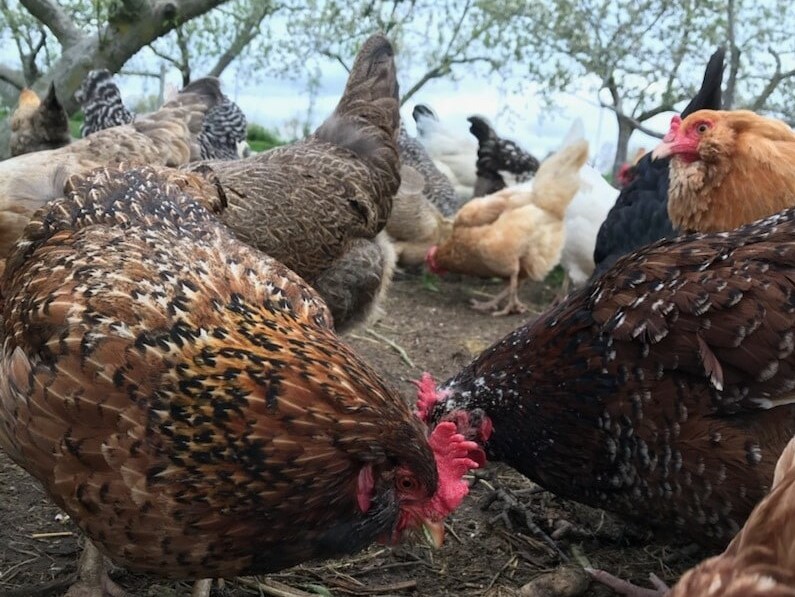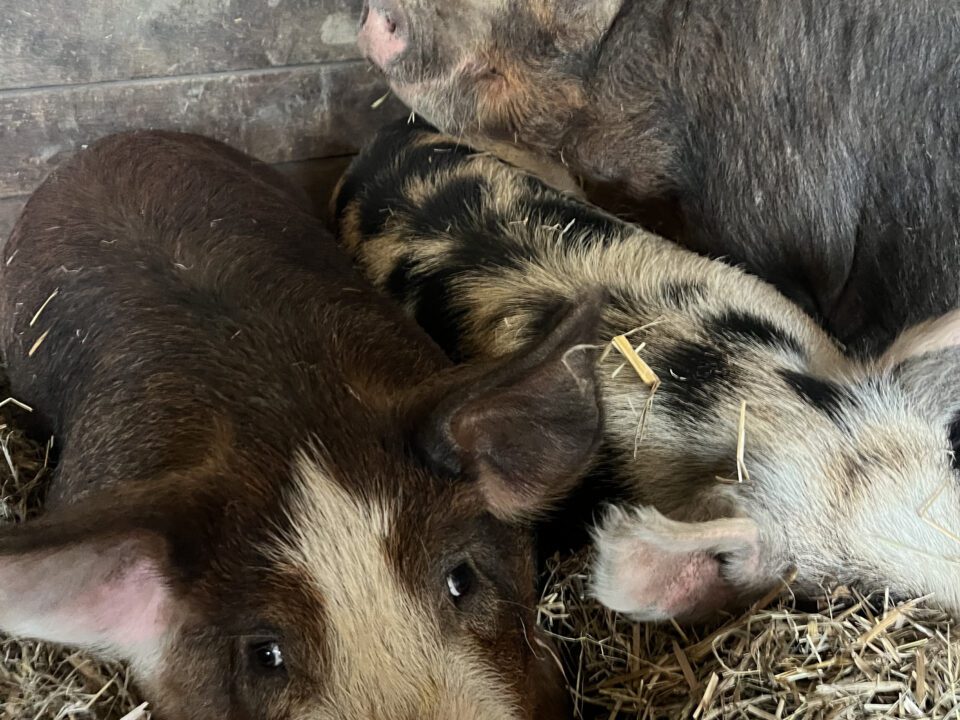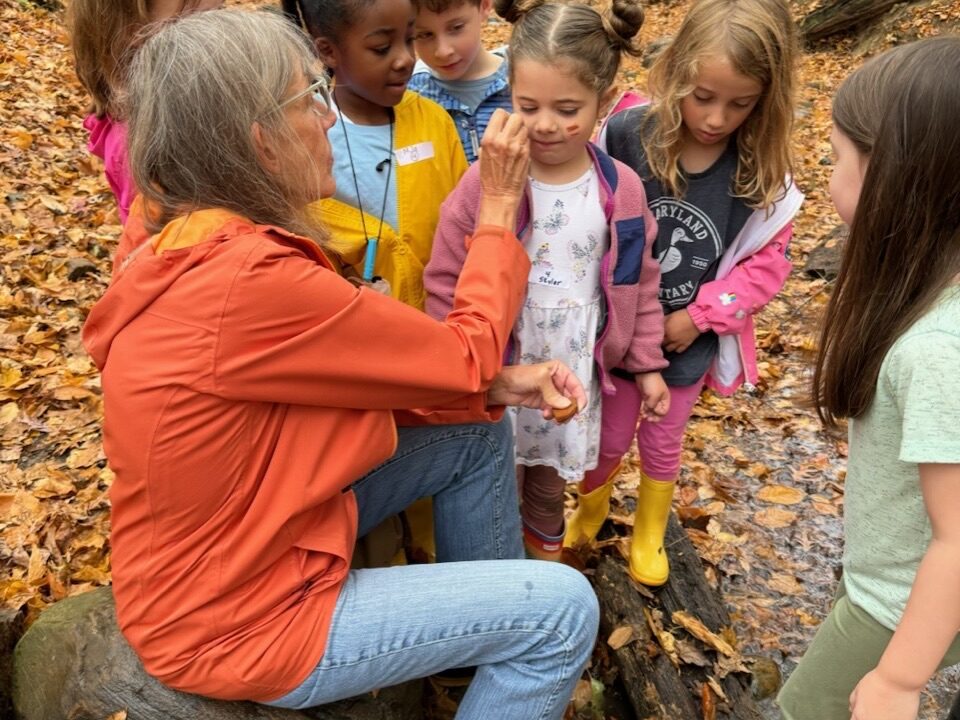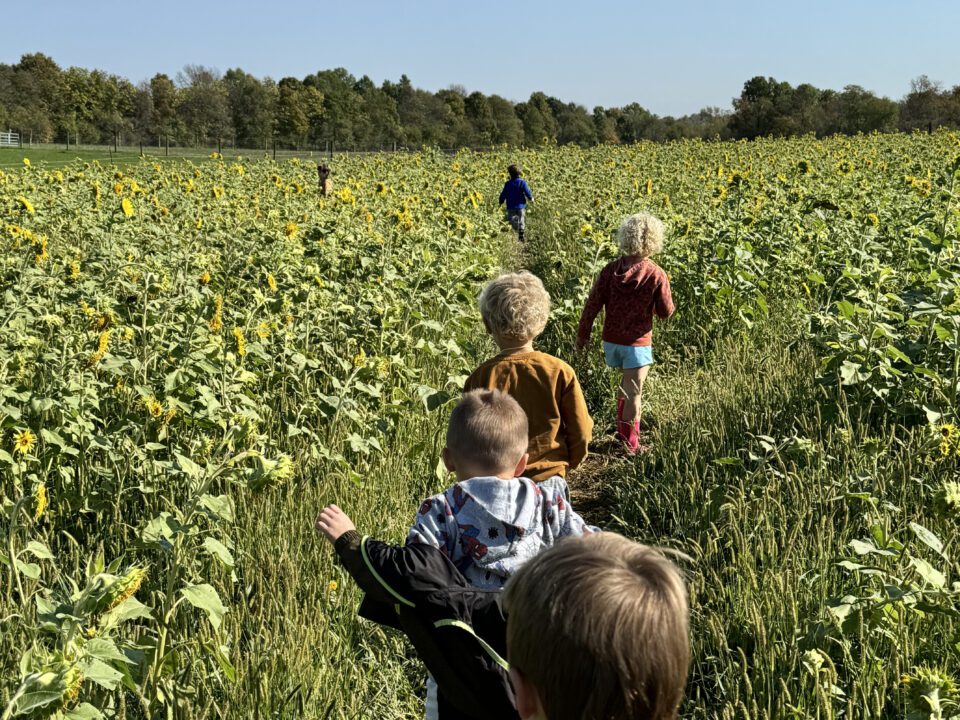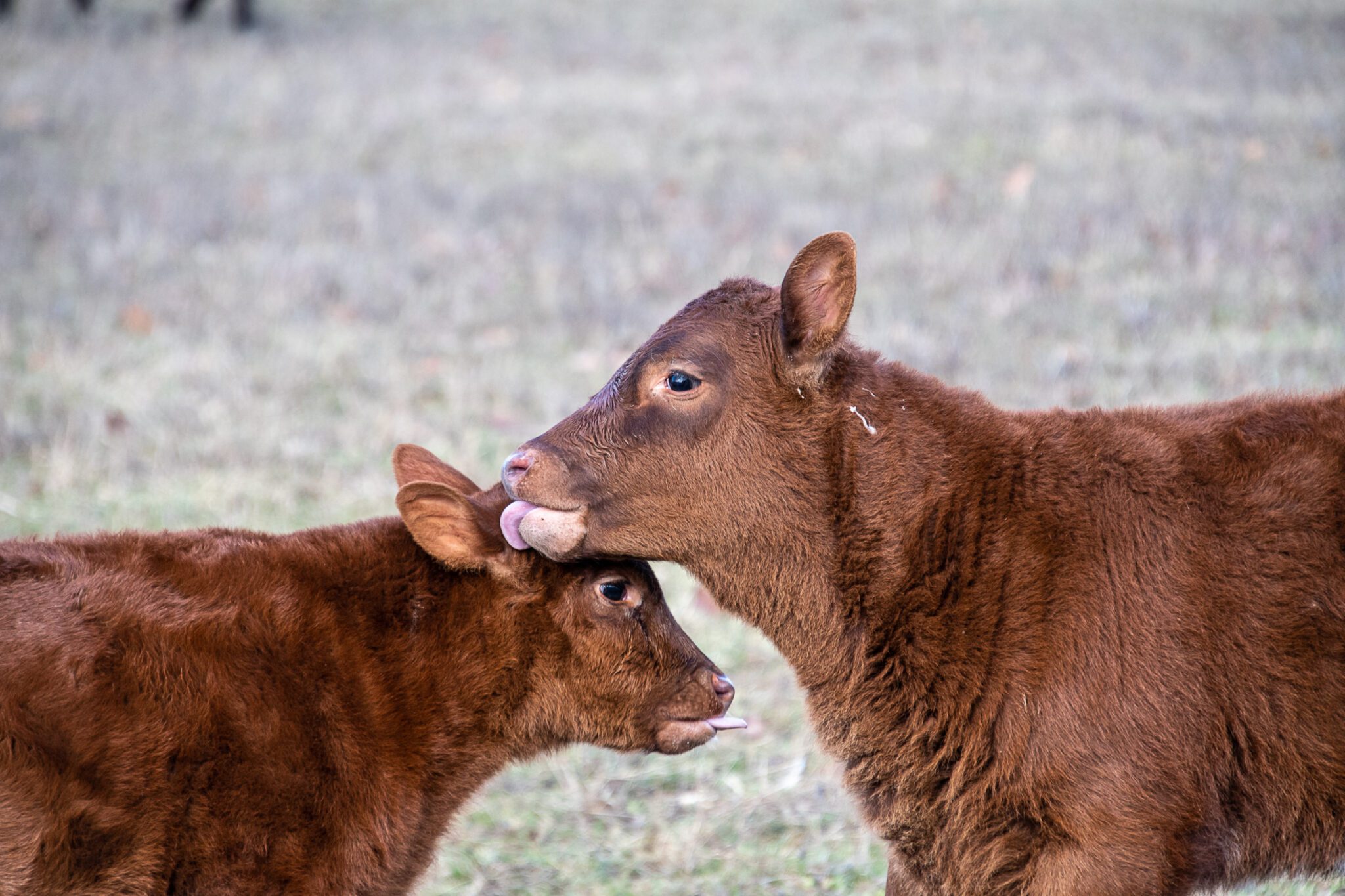
Wanted: Name for Sugar’s Calf Born on Thanksgiving Day
December 4, 2010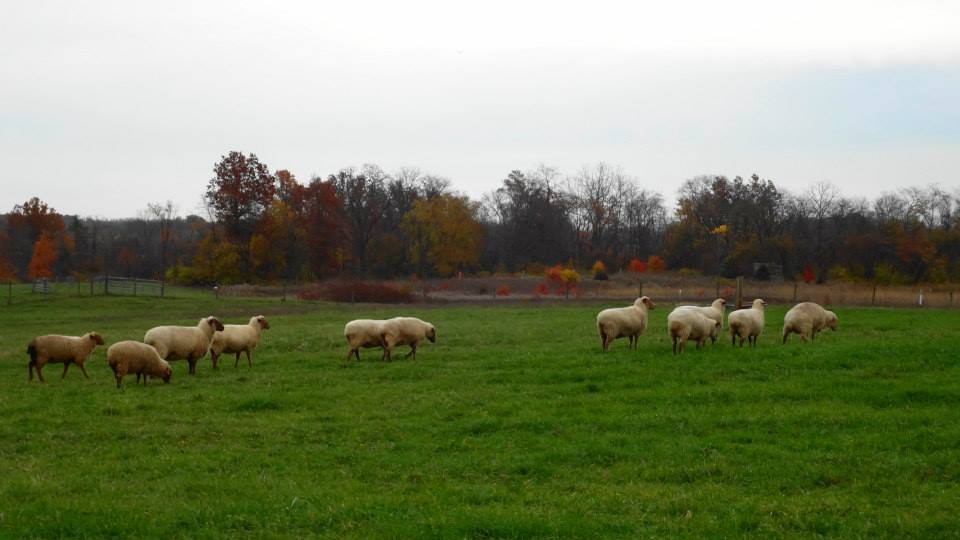
New Lambs at Stratford Herald the Coming of Spring
March 5, 2011Published in The Delaware Gazette: February 5, 2011
The land at Stratford Ecological Center on Liberty Road remains snow‐covered, with no sign of a thaw in sight. It’s actually good news for the fall‐planted barley and spelt, that love the warmth the white blanket provides for them. Prior to the snow, there was a noticeable difference between the two grains. The barley, next to the woods, was more yellow and shorter. The yellowing was due to leaf litter blown onto the field, resulting in a lack of sunlight reaching the plant, and it prevented the soil from drying. We expected the spelt to be the taller, as one of its desirable features is that it towers above the weeds. This is a plus because the combine can harvest the heads only, to prevent chocking itself with the lower weeds.
Stratford was fortunate not to loose power during the ice storm last Tuesday night. There is a generator available for such an emergency, powered by a tractor, to provide a limited amount of power for pumping water for the stock and lighting. However, it is much warmer and safer not to have to go out and start it up. It was a noisy night anyway, as ice and trees fell in the nature preserve and a tree landed across the farm lane.
The Center closed during the bad weather, but no doubt we would have called in farm intern, Gabe Ross, to help open up the lane. Like most farmers, Gabe can turn his hand from calving Sugar on Thanksgiving Day to sawing up a tree, or whatever is demanded to keep the farm operating. Unfortunately, almost three weeks ago, Gabe broke his leg whilst sledding with his niece and nephew, so he’s out of commission for heavy work. The leg is mending well and he is getting around on crutches. Enough in fact, he could come in at the end of the week to start vegetable seeds in flats in the small greenhouse.
It was good thing Gabe mixed up a ton, literally, of chicken feed in early December, before the leg break. The feed is stored in two wooden bins in the barn, and should last until early spring. It is no small task to dump into the mobile grinder, in proportion to their feed value, home‐grown oat hay, spelt and buckwheat, along with roasted soybeans we purchased last January, and minerals and calcium. Once ground, the final task is to add twenty‐four 50‐pound tubs of corn on the cob. The corn is stored in a wagon, and opening a small door at the base allows the ears to fall into the tub. These are thrown by the handful into the grinder. The heavier corn falls through the lighter feed and mixes in well. The formula, along with access to their outside run, is the secret to keeping our hens happy, and producing the most nutritious eggs they can possibly lay!
Indeed, the hens are now kicking into high gear and lay between them up to three dozen eggs a day. A single light bulb on a timer comes on at sunset, and extends their light for three and a half hours. The young chicks have now been combined with the older hens. Despite being less than five months old, they are laying eggs. This surprises farmer Jeff Dickinson, as it usually takes another month before they would produce. It is funny to see them racing around the corner of the hen house or emerging quickly through their small door, when any greens or left‐over milk is taken into their run for them to enjoy.
Farmer Jeff has deliberately not given the go ahead to bring any pigs onto the farm at present. It has been helpful to have their pen to house and feed the five Shetland ewes and four “wethers” or young male goats. These smaller animals have difficulty muscling their way to the feeding trough with the bigger Tunis ewes and nanny goats. Fuzzy, the buck, has been separated from the nannies and once the new truck purchase is completed he will be transported to his home on Dan Fry’s farm.
The overall condition of all the animals is good. Our hay supply should see us through the winter, although the excessive summer heat in the hayloft dried out the green hay, causing it to turn brown, and reducing its quality. This necessitated a twenty percent increase in the amount fed to the animals. If it does not last, we have a source to buy‐in hay at a reasonable price. We are happy to share that Stratford has once again received our annual Organic Certification.
The cats are numerous and often draw the most attention from Stratford’s visitors. During the extremely cold weather they could often be found curled up together on top of the thick brown wooly sheep skin, which has been in the barn for years. It never does to underestimate the use of anything that is old.
Maple sugaring season is at least three weeks away. Once the daytime temperatures reach between 42‐45 degrees Fahrenheit and the nighttime temperatures still fall below 32 degrees, we will start tapping the trees. It takes two days to bore a hole in 150 trees and insert the metal taps.
This year there will be more opportunities to visit the sugar shack AND we have a plan to avoid long lines for our annual breakfast. There will be one hour guided tours, every half hour from 10 am.‐1 pm. on Saturdays, March 5 and 19. The cost is $3 and reservations are necessary. On Saturday, March 12 ONLY, from 8 am.–1 pm., a sausage and pancake breakfast is planned, followed by a guided tour. The cost is $10/adult, $7/child aged 2‐12, with reservations required for a specific time. I trust the very thought of such an outing will help you through the wintry February days and do remember to contact us.
“Farm Connection” is a monthly article connecting city folk to life on the Stratford Ecological Center farm. It is published on the first Saturday of the month on the farm and garden page of The Delaware Gazette.


